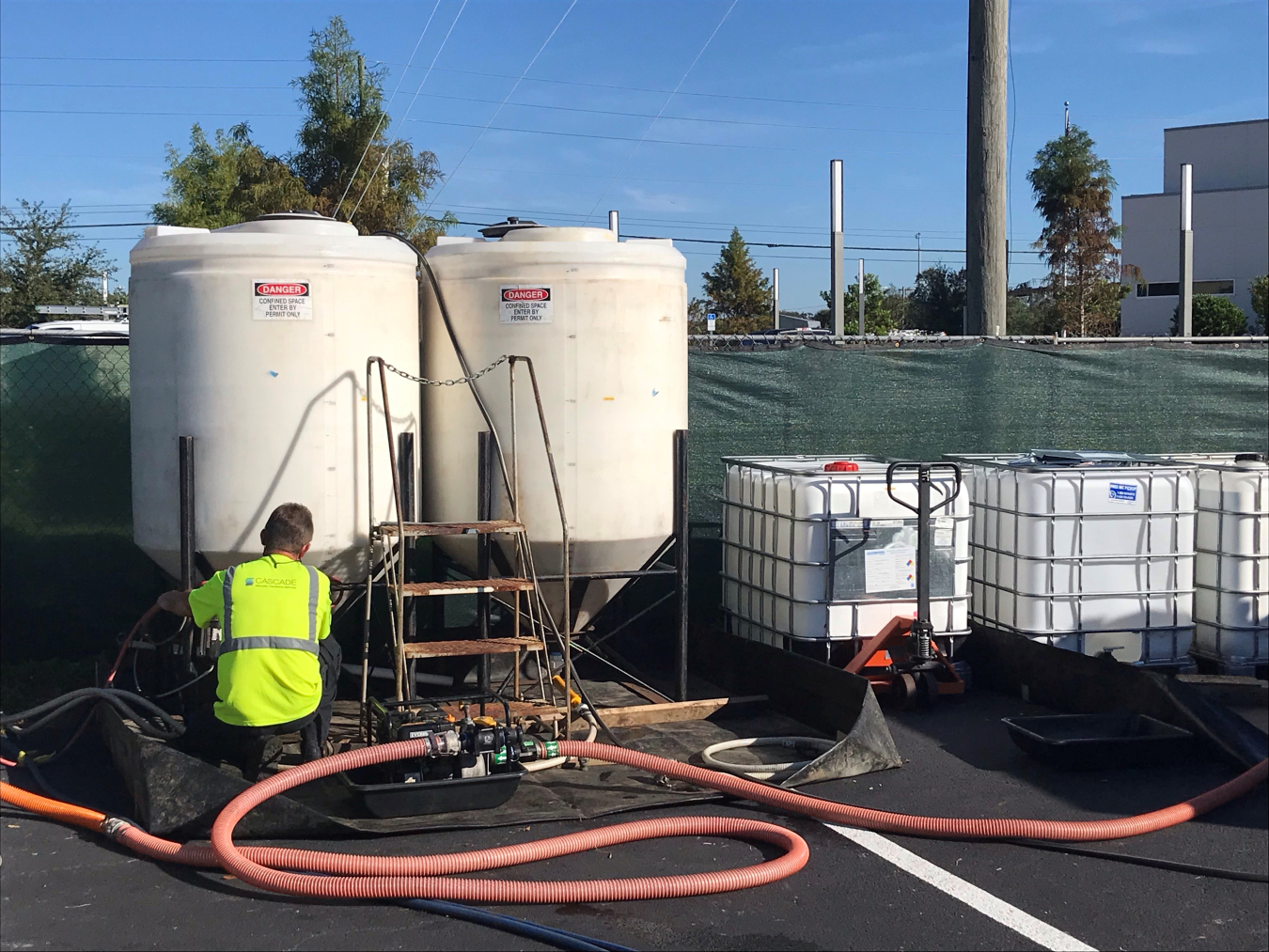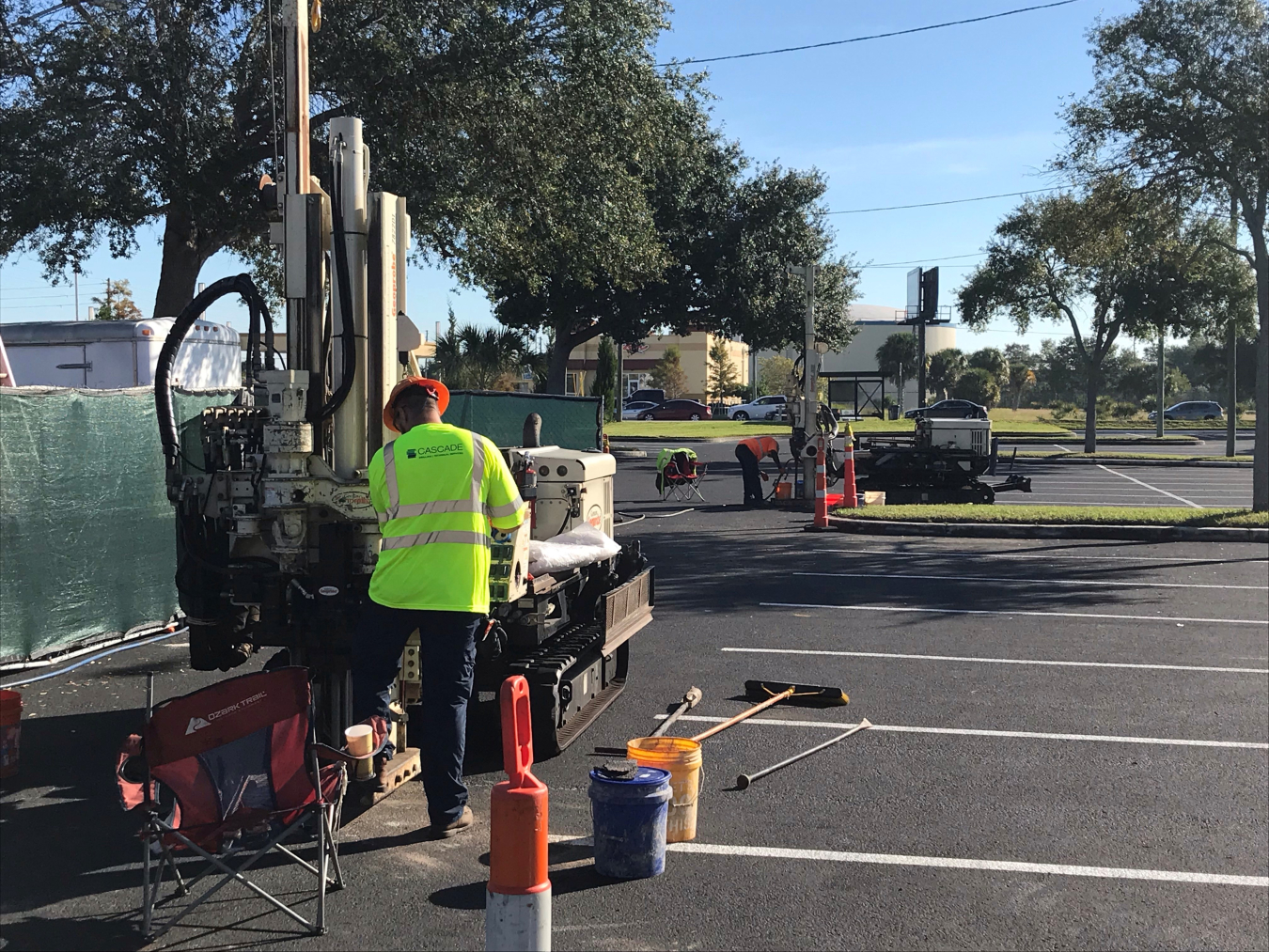LM announced the unconditional closure of a unit of its Pinellas County, Florida, Site.
November 22, 2019
A bioinjection solution mixing station at LM’s Pinellas County Site.
The U.S. Department of Energy (DOE) Office of Legacy Management (LM) announced the unconditional closure of a unit of its Pinellas County, Florida, Site.
The closure order, issued by the Florida Department of Environmental Protection, specifies that DOE no longer has any responsibilities for the unit, known as the 4.5 Acre Site, and that the landowner has full and unrestricted use of the property.
The unconditional closure is a first for an LM site.
"Earning an unconditional closure is an enormous tribute to DOE's commitment to long-term stewardship at Pinellas, and the many dedicated staff who have worked for decades to make this happen," said Scott Surovchak, LM site manager. "We utilized multiple technologies in innovative ways to meet very stringent requirements for remediating the site to a clean condition."
The Pinellas County site is located in Largo, across Tampa Bay from the city of Tampa. The privately owned 4.5 Acre Site is situated within the northwest corner of the overall site. The unit was previously part of the former Pinellas Plant, constructed by General Electric in 1956 to develop and manufacture components for the nation’s nuclear weapons program. The 4.5 Acre Site was used for the disposal of drums containing waste resins and solvents, resulting in contamination of soil and groundwater in the shallow aquifer.
The drums and the contaminated soil were removed in 1985. In 1990, DOE began operating a groundwater extraction and treatment system, followed by a dual-phase extraction system that removed both liquid- and vapor-phase contaminants. By 1998, DOE had treated approximately 9.45 million gallons of contaminated groundwater. The dual-phase system became less effective, however, as contaminant concentrations decreased.

Direct-push rigs used for the bioinjection process at LM’s Pinellas County Site.
To treat the remaining contaminants at the 4.5 Acre Site, DOE turned to biosparging, a process of using naturally-occurring microorganisms to biodegrade contaminants into non-toxic compounds. After operating a biosparging system for several years, results from an investigation in 2007 indicated that a contaminant source was still present in the soil. From 2008 to 2009, DOE excavated approximately 2,500 cubic yards of contaminated soil using a large-diameter auger method. To treat contaminants remaining in the groundwater at low concentrations after the soil removal, DOE performed three bioinjection events in 2010, 2013, and 2016, injecting a native microbe combined with emulsified soybean oil into the soil.
"The soybean oil gave the microbes a viable natural environment in which to do their work," Surovchak explained. "And because the microbes are anerobic, we took extraordinary measures to eliminate or minimize their exposure to oxygen, in order to keep them healthy."
While LM no longer bears environmental liability for the 4.5 Acre Site, the office will continue its long-term stewardship activities elsewhere at the Pinellas County site. This includes employing the bioinjection method to treat groundwater contaminant plumes in the Building 100 area on the southeastern portion of the site. The U.S. government does not own, and DOE does not have jurisdiction, over any of the properties that constitute the Pinellas County Site.
Learn more about LM's Pinellas County, Florida, Site.

